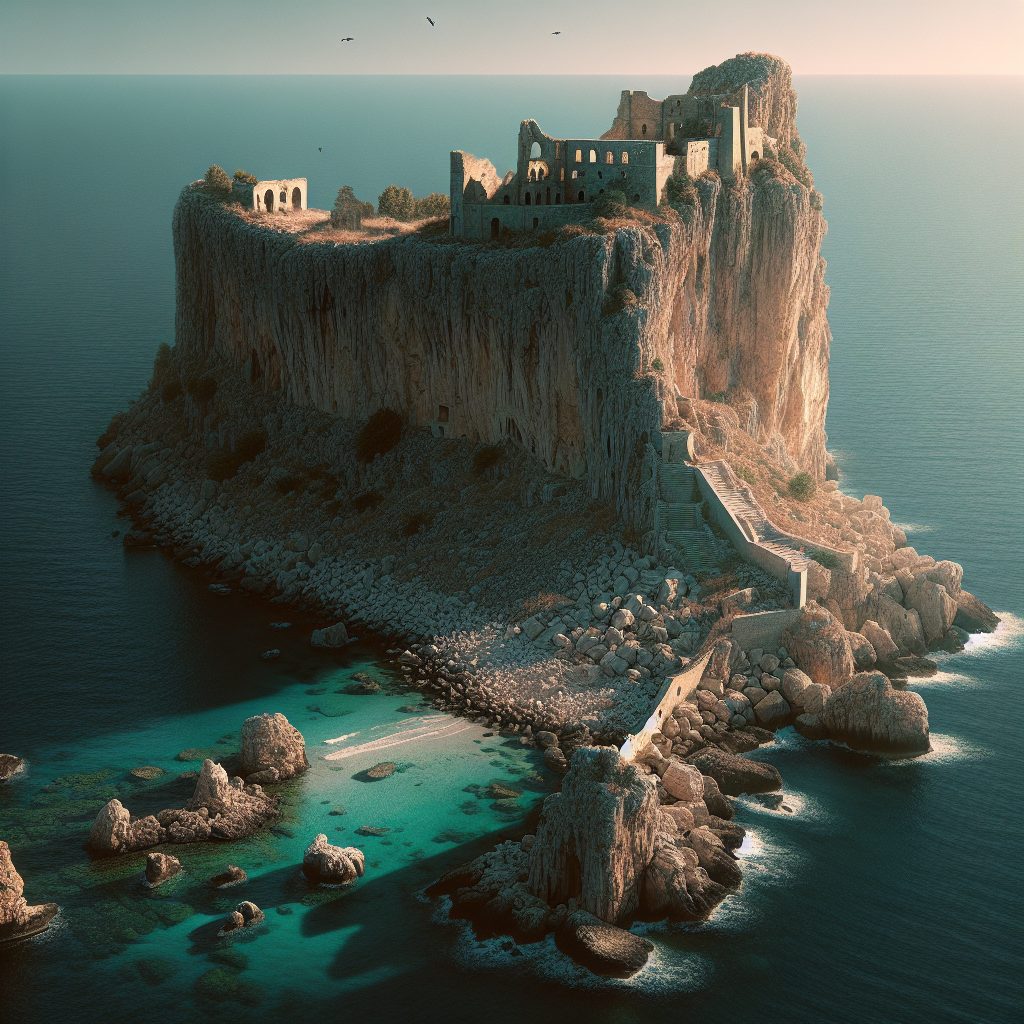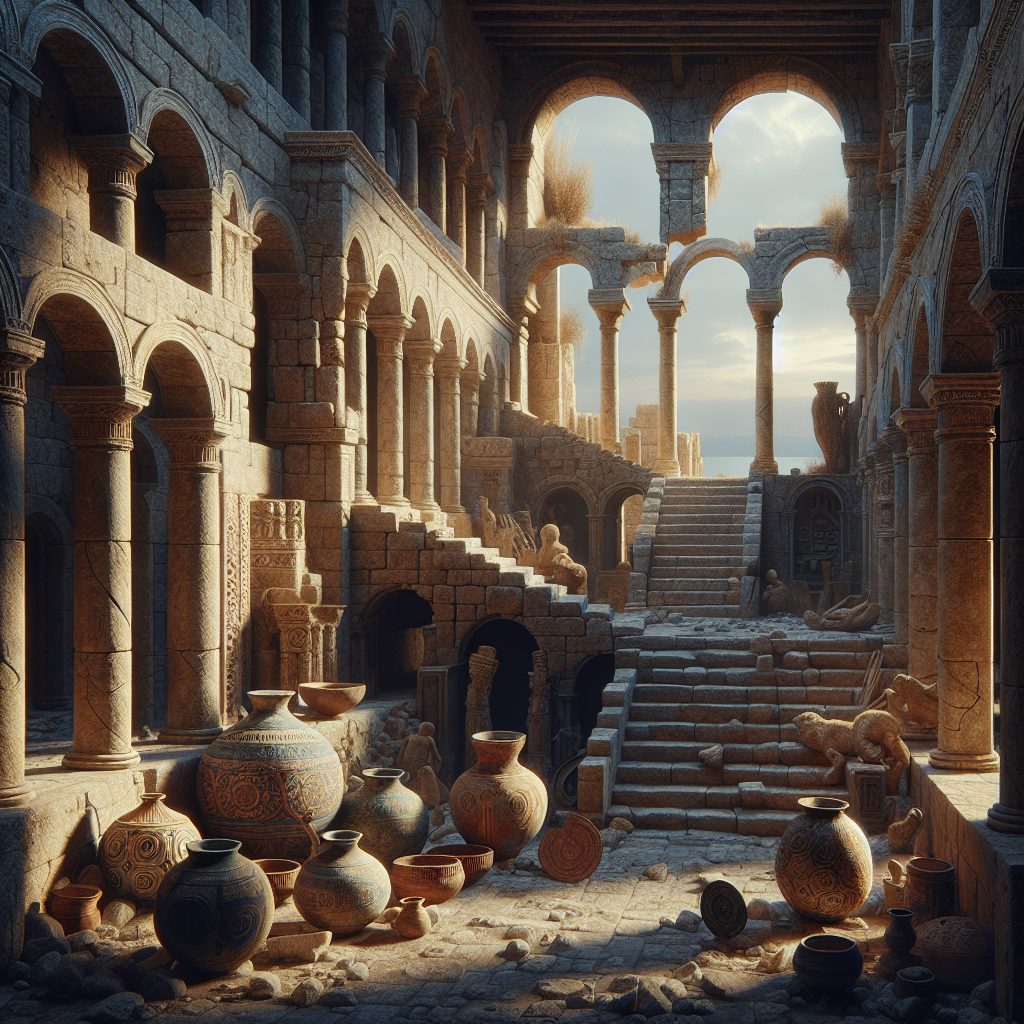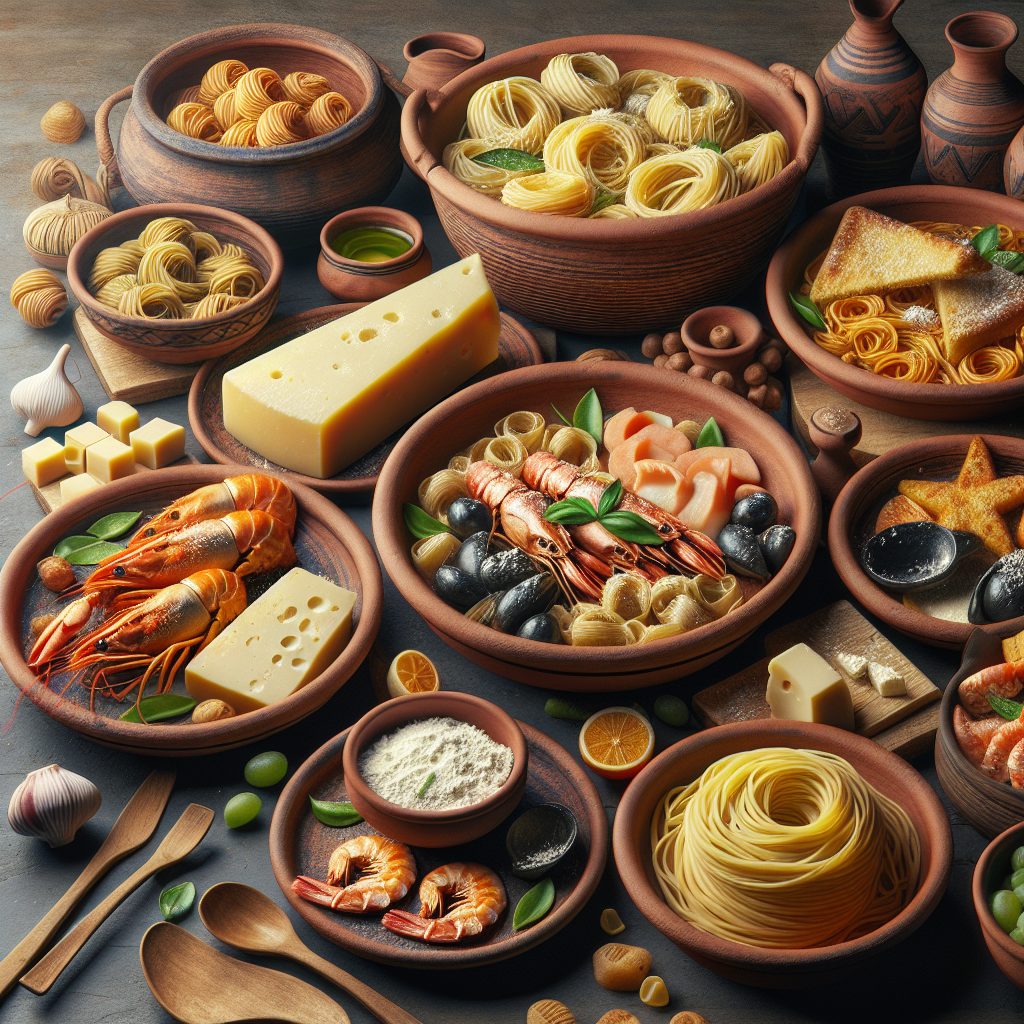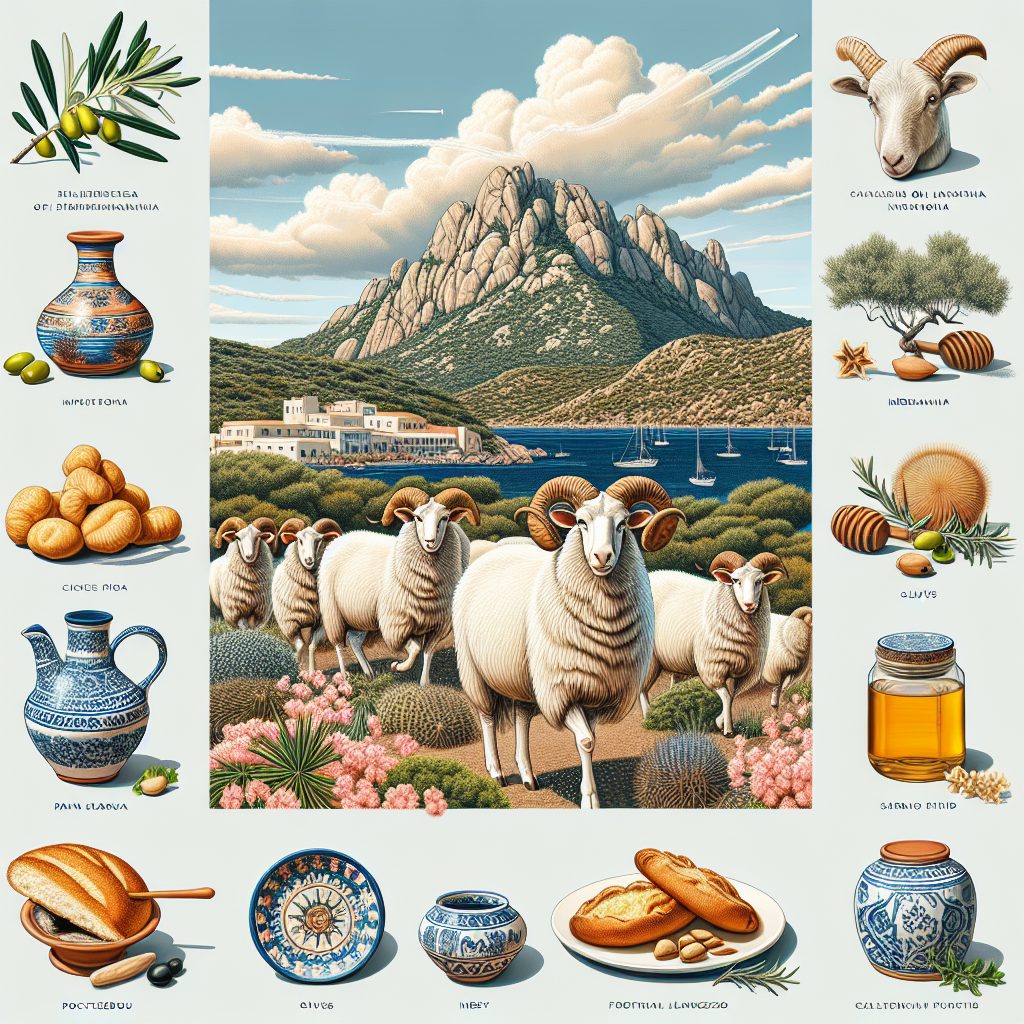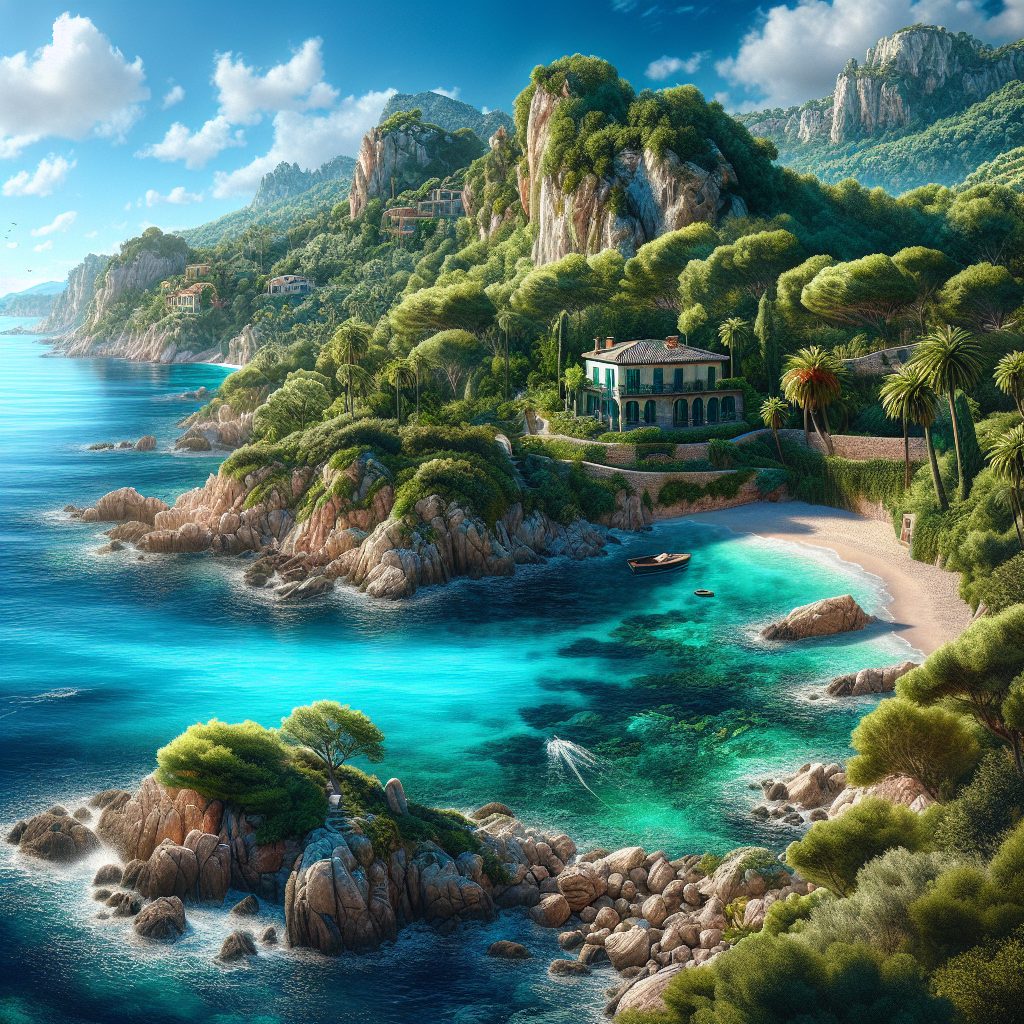Sella del Diavolo, a captivating limestone promontory located on the southern coastline of Sardinia, Italy, is a place steeped in history and folklore. Its name, which translates to “Devil’s Saddle,” is derived from the peculiar shape of the cliff, resembling a saddle, and the mythical tales surrounding its creation. According to legend, the Devil himself was riding his horse along the coast when the saddle slipped off and formed the rock formation we see today. The intriguing history and distinctive location of Sella del Diavolo have not only made it a popular tourist attraction but have also deeply influenced the local culture and heritage.
Nestled between the vibrant city of Cagliari and the crystal-clear waters of the Mediterranean Sea, Sella del Diavolo boasts a rich and diverse history. It has witnessed numerous civilizations, including Phoenicians, Romans, and Byzantines, who recognized the strategic importance of this prominent landmark. With its commanding views and natural defensive characteristics, the cliff served as a defensive outpost, guarding the southern entrance of Cagliari’s Gulf. The remnants of ancient fortifications, such as the Punic sanctuary and Roman watchtower, stand as a testament to the region’s historical significance. Moreover, the otherworldly charm and enchanting aura of Sella del Diavolo have inspired countless artists, writers, and poets throughout the ages.
In the forthcoming sections of this article, we will delve deeper into the fascinating history and cultural impact of Sella del Diavolo. We will explore the various archaeological findings that unearthed the secrets of its past and shed light on the people who once inhabited this area. Furthermore, we will examine the legends and folklore associated with the Devil’s Saddle, revealing the mystical allure that continues to captivate visitors and locals alike. So sit back, relax, and join us on this journey through time as we uncover the hidden gems and captivating tales of Sella del Diavolo.
Key Takeaways
1. Sella del Diavolo is a promontory located on the southern coast of Sardinia, Italy, known for its rich historical and cultural significance.
2. The name “Sella del Diavolo” translates to “Devil’s Saddle” in English, and it originates from a local legend involving a fallen angel who created the promontory’s distinctive shape.
3. This unique geographical formation, with its jagged cliffs and lush Mediterranean scrub, has attracted human settlement for thousands of years, as evidenced by the discovery of ancient artifacts and structures, including Nuragic and Roman settlements.
4. The historical importance of Sella del Diavolo is also evident in its strategic position, commanding a beautiful panoramic view of the Gulf of Cagliari and being used as a lookout point by various civilizations throughout history.
5. Today, Sella del Diavolo remains an iconic symbol of the city of Cagliari, attracting visitors from around the world who come to explore its fascinating historical past, enjoy its hiking trails, and admire the stunning natural beauty of the area.
Note: This response is generated based on a general understanding of the given topic. It is advised to refer to the actual article for a more accurate and comprehensive representation of the content.
What is the Historical Significance of Sella del Diavolo?
Geographical Background
Sella del Diavolo, also known as the Devil’s Saddle, is a prominent geographical feature located on the southern coast of Sardinia, Italy. It is an imposing limestone promontory that rises to a height of 123 meters above sea level and overlooks the Gulf of Cagliari. The name Sella del Diavolo is derived from the unique saddle-shaped formation of the hill.
Ancient Origins
The history of Sella del Diavolo dates back to ancient times. Archaeological evidence suggests that the area surrounding the promontory has been inhabited since the Neolithic period. Traces of human occupation, such as pottery fragments and stone tools, have been discovered in caves and rock shelters found in the vicinity of Sella del Diavolo.
The Phoenician Influence
Sella del Diavolo played a significant role during the Phoenician colonization of Sardinia. The Phoenicians, a seafaring people from the Eastern Mediterranean, established a trading outpost at the base of the promontory around the 9th century BC. This strategic location allowed them to control maritime trade in the region and establish commercial connections with other Mediterranean civilizations.
Roman Presence
During the Roman period, Sardinia became a vital part of the empire, and Sella del Diavolo continued to hold strategic importance. The Romans built a watchtower on the summit of the promontory to monitor the coastal areas and protect against potential invasions. The remains of this ancient tower can still be seen today.
Legends and Folklore
Sella del Diavolo is not only known for its historical significance but also for the numerous legends and folklore associated with it. According to local tales, the promontory was formed by the devil himself, who had lost his saddle while fleeing from a witch during a fierce battle. The peculiar shape of Sella del Diavolo serves as a reminder of this mythical event and has captured the imagination of both locals and tourists alike.
Preservation and Tourism
Recognizing its historical and natural importance, efforts have been made to preserve the unique ecosystem around Sella del Diavolo. The promontory is now part of a protected marine area, catering to the diverse marine life and providing opportunities for recreational activities such as diving, snorkeling, and hiking. Walking trails have been established, allowing visitors to explore the captivating beauty of the surrounding landscape.
Archaeological Exploration
Various archaeological surveys and studies have been conducted in the vicinity of Sella del Diavolo to unravel its rich history further. These efforts have unearthed artifacts, including pottery, jewelry, and architectural remains, shedding light on the ancient civilizations that once thrived in this area.
Tourist Attractions
Sella del Diavolo has become a popular tourist destination, attracting nature enthusiasts, history buffs, and adventure seekers alike. The spectacular panoramic views from the top of the promontory, coupled with the opportunity to explore its historical sites and engage in outdoor activities, make it a must-visit place for travelers visiting Sardinia.
Guides and Tips for Exploring Sella del Diavolo
- How to reach Sella del Diavolo: Sella del Diavolo is easily accessible from Cagliari, the capital city of Sardinia. Visitors can choose to hike to the summit from different starting points, such as Poetto Beach or Calamosca Beach, or opt for guided tours.
- Best time to visit: The ideal time to explore Sella del Diavolo is during the spring and autumn seasons when the weather is mild, and the flora and fauna are at their best. The promontory can be crowded during the summer months, so visiting during off-peak seasons is recommended for a more serene experience.
- Preparing for the hike: As Sella del Diavolo involves a moderate hiking trail, it is essential to wear comfortable footwear and clothing suitable for outdoor activities. Carrying water, sun protection, and a camera to capture the breathtaking views is also advisable.
- Exploring the marine life: Diving and snorkeling enthusiasts can explore the marine life around Sella del Diavolo by joining guided underwater excursions. The crystal-clear waters provide an opportunity to encounter various fish species and marvel at the vibrant underwater ecosystem.
- Discovering the local cuisine: After a day of exploring Sella del Diavolo, visitors can indulge in the local Sardinian cuisine at nearby restaurants and enjoy fresh seafood dishes, traditional pasta, and regional specialties.
FAQ
1. What is the significance of Sella del Diavolo’s history?
Sella del Diavolo’s history holds great importance as it is closely tied to the cultural heritage and mythological legends of the city it overlooks. Exploring this history helps understand the impact of different civilizations on the region and its evolution over time.
2. Which civilizations left their mark on Sella del Diavolo?
Sella del Diavolo has been influenced by several civilizations throughout history, including the Phoenicians, Romans, Byzantines, and Spaniards. Each civilization has contributed to the historical narrative of the area, leaving behind traces of their architectural, cultural, and economic influence.
3. What mythological legends are associated with Sella del Diavolo?
According to local legends, Sella del Diavolo (Devil’s Saddle) got its name from the belief that the devil himself landed on the promontory and left an imprint of his saddle. This legend adds a mystical and enchanting element to the historical significance of the site.
4. Can visitors access Sella del Diavolo?
Yes, visitors can access Sella del Diavolo through various hiking trails that lead to the summit. Although some parts of the terrain can be challenging, the breathtaking panoramic views and historical landmarks make it a popular destination for outdoor enthusiasts and history lovers.
5. Are there any guided tours available for Sella del Diavolo?
Yes, there are guided tours available for Sella del Diavolo. Professional guides provide insightful information about its history, geological features, and surrounding flora and fauna. These tours enhance the overall experience by providing a comprehensive understanding of the area.
6. What are the main attractions on Sella del Diavolo?
Sella del Diavolo offers various attractions, including ancient ruins, such as the Roman amphitheater and archaeological sites. Additionally, the biodiversity of the area, consisting of unique and rare plant species, adds to its appeal for nature enthusiasts.
7. How long does it take to explore Sella del Diavolo?
The duration to explore Sella del Diavolo depends on individual preferences and physical capabilities. On average, it takes around 2 to 3 hours to fully explore the area and enjoy its historical and natural beauty.
8. Is Sella del Diavolo accessible for people with mobility issues?
Unfortunately, due to the rugged terrain and steep slopes, Sella del Diavolo may not be easily accessible for individuals with mobility issues. It requires moderate physical fitness to navigate the trails and enjoy the site fully.
9. Can we have a picnic or recreational activities on Sella del Diavolo?
Sella del Diavolo is primarily a natural reserve with historical significance, so recreational activities, such as picnics, are not encouraged. It is important to respect the preservation of the site and its natural environment.
10. Are there any nearby attractions to visit after exploring Sella del Diavolo’s history?
Around Sella del Diavolo, there are various attractions worth visiting, such as the Poetto Beach, Molentargius Natural Park, and the historic city center of Cagliari. These additional destinations provide an opportunity to further explore the rich history and stunning landscapes of this region.
Final Thoughts
Exploring the history of Sella del Diavolo unravels a captivating tale of human civilizations, mythological beliefs, and the enduring beauty of nature. This promontory serves as a testimony to the cultural heritage and offers visitors an exceptional experience by combining historical significance with breathtaking panoramic views.
The legends and archaeological wonders associated with Sella del Diavolo lure visitors into a journey through time, allowing them to immerse themselves in the fascinating stories that shaped this prominent landmark. Whether one is an avid hiker, a history enthusiast, or simply seeking a unique experience, Sella del Diavolo proves to be a remarkable destination that leaves a lasting impression.

